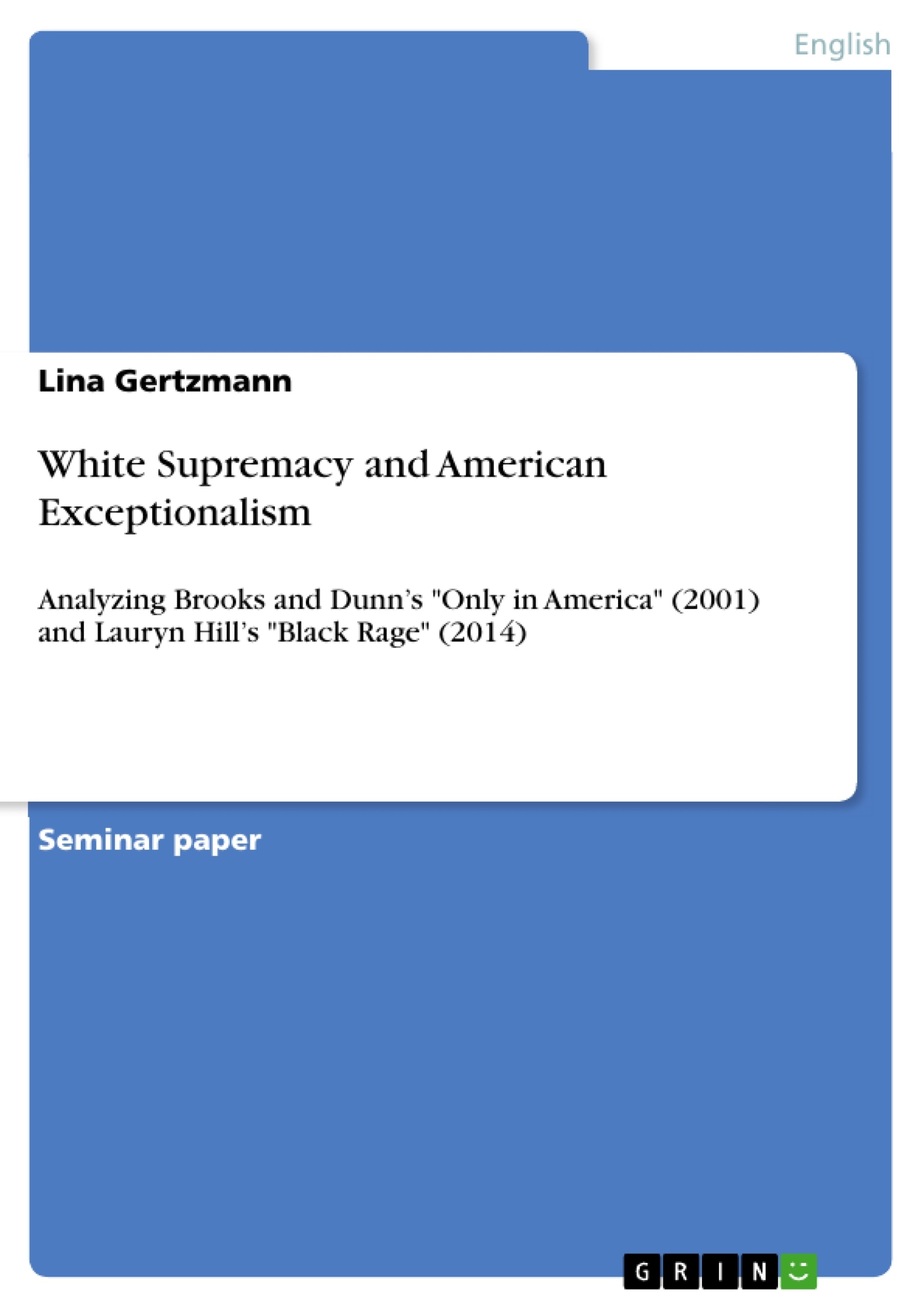The term paper is to examine the depiction of American Exceptionalism and White Supremacy as two cultural concepts in media. Therefore, the origin of these two phenomena will be explained and related to events in the course of America’s historical development.
In order to analyze the perception of American culture by people with different ethnic backgrounds “Only in America” (2001) by Brooks and Dunn, a song performed by white artists, and “Black Rage” (2014) by Lauryn Hills, representing an African-American perspective, have been chosen.
Hence, the term paper is to define the two concepts American Exceptionalism and White Supremacy and is to point out how these are depicted in two songs written by descendants of two different ethnic backgrounds.
Table of Contents
- I. Introduction
- II. Presentation of two Cultural Phenomena
- 2.1 American Exceptionalism
- 2.2 White Supremacy
- III. Depiction of these Concepts in Media
- IV. Conclusion
Objectives and Key Themes
This term paper examines the depiction of American Exceptionalism and White Supremacy as cultural concepts in media. It explores the origins of these phenomena and connects them to historical events in the development of the United States. The analysis focuses on how these concepts are perceived by individuals with different ethnic backgrounds, using "Only in America" (2001) by Brooks and Dunn, a song performed by white artists, and "Black Rage" (2014) by Lauryn Hill, representing an African-American perspective. The paper defines American Exceptionalism and White Supremacy, highlighting their depiction in these songs. The focus is on how life in the United States is perceived and experienced by different ethnicities and how American Exceptionalism is viewed by various members of American society.
- The portrayal of American Exceptionalism and White Supremacy in media.
- The perception of American culture by different ethnicities.
- The influence of historical events on the development of these cultural concepts.
- The connection between American Exceptionalism, the American Dream, and social justice.
- The critique of White Supremacy and its impact on people of color.
Chapter Summaries
I. Introduction: The introduction lays out the paper's objectives, focusing on the depiction of American Exceptionalism and White Supremacy in media. It introduces the songs "Only in America" by Brooks and Dunn and "Black Rage" by Lauryn Hill as examples of contrasting perspectives on these concepts. The paper aims to analyze how life in the United States is experienced and perceived by different ethnicities, highlighting the role of historical context and cultural background.
II. Presentation of two Cultural Phenomena: This section provides definitions and historical context for both American Exceptionalism and White Supremacy. It explores the roots of American Exceptionalism in the Puritan settlement of Boston and the concept of “manifest destiny,” linking these to the idea of “upward mobility” and the American Dream. The section then delves into White Supremacy, defining it as a system of racial discrimination and social preference for white people. It examines the role of colonialization and the concept of terra nullius in shaping this ideology.
Keywords
American Exceptionalism, White Supremacy, ethnic background, media representation, historical context, American Dream, social justice, "Only in America," Brooks and Dunn, "Black Rage," Lauryn Hill, colonialization, terra nullius, Puritanism.
- Quote paper
- Lina Gertzmann (Author), 2021, White Supremacy and American Exceptionalism, Munich, GRIN Verlag, https://www.grin.com/document/1132410




